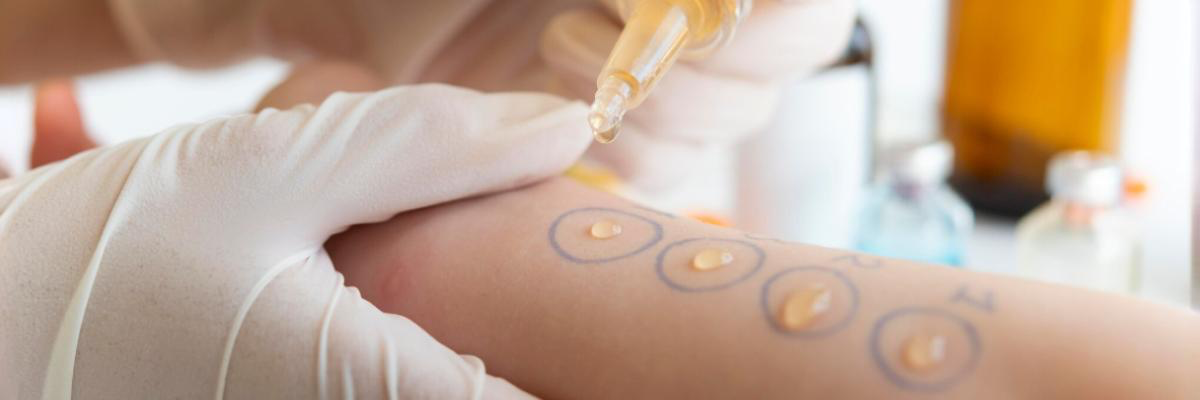If you struggle with persistent sneezing, itching, or other disruptive symptoms, you may have an allergy. The first step toward finding lasting relief is getting a definitive allergy diagnosis. Specialized allergy testing is a safe and highly effective method used by specialists to identify the precise triggers causing your discomfort. Understanding what happens during an evaluation, such as a skin prick test or blood test, can help demystify the process and provide you with the confidence to take control of your health.
The distinguished medical specialists at Doral Health & Wellness are dedicated to providing comprehensive and compassionate care. Our team utilizes advanced diagnostics to deliver the highest standard of personalized treatment strategies, ensuring you receive the support needed to manage your health with confidence.
Why is Allergy Testing Recommended?
Your primary care physician or a specialist may recommend allergy testing if you experience symptoms that suggest an allergic reaction without a clear cause. An accurate diagnosis is crucial for effective treatment. Common indications for testing include:
- Respiratory Symptoms – Chronic sneezing, nasal congestion, runny nose, and itchy, watery eyes that suggest allergic rhinitis (hay fever).
- Asthma – To determine if allergens are a significant trigger for your asthma symptoms.
- Food Reactions – To diagnose a suspected food allergy after a reaction.
- Skin Reactions – Persistent hives, eczema, or rashes that could be linked to an allergen.
- Anaphylaxis – To identify the trigger after a severe, life-threatening allergic reaction.
The Skin Prick Test: A Step-by-Step Guide
The skin prick test is the most common and reliable form of allergy testing. It is a simple, minimally invasive procedure that provides rapid results, usually within 20 minutes.
How it Works
- Preparation – The allergist or a nurse will clean a patch of skin, typically on your forearm or back. They will then use a pen to mark the skin and label where each allergen will be placed.
- Application – A small drop of liquid containing a purified allergen is placed at each marked spot. The number of allergens tested can range from a few to 40 or more, depending on your history.
- The Prick – A small, sterile device is used to gently prick the skin through the allergen drop. This is not a shot and does not draw blood; it feels like a light scratch.
- Observation – You will wait for about 15-20 minutes. During this time, the allergist will observe your skin for any reaction.
- Results – If you are allergic to a substance, a small, raised, itchy red bump called a “wheal” will appear at that spot, similar to a mosquito bite. The size of the wheal helps determine the degree of your sensitization.
Other Types of Allergy Testing
While the skin prick test is common, your allergy doctor may recommend other methods depending on your specific situation.
- Intradermal Test – This test is more sensitive than the skin prick test. A tiny amount of allergen is injected just under the surface of the skin. It is often used to test for insect venom or penicillin allergies if the initial skin prick test is negative but an allergy is still suspected.
- Patch Test – This method is used to diagnose contact dermatitis, a type of skin allergy caused by direct contact with a substance like nickel, fragrances, or latex. An adhesive patch with various allergens is placed on your back and left for 48 hours to see if a localized rash develops.
- Specific IgE Blood Test – This test measures the amount of specific allergy-causing antibodies (Immunoglobulin E) in your blood. It is a useful alternative when skin testing is not possible, such as for patients with severe skin conditions or those who cannot stop taking certain medications.
How to Prepare for Your Allergy Testing Appointment
To ensure accurate results, you must stop taking certain medications before your appointment, as they can interfere with the test.
- Antihistamines – You will need to stop both over-the-counter and prescription antihistamines for 3 to 7 days before your skin test.
- Other Medications – Some heartburn medications, antidepressants, and other drugs can also affect results. Your allergist’s office will provide you with a detailed list of medications to pause.
Do not stop any medication without first consulting with your doctor. Blood tests are not affected by medications, so no preparation is usually needed.
Interpreting Your Results and Next Steps
A positive test result indicates that you are “sensitized” to an allergen. However, sensitization does not always mean you will have a clinical reaction. Your allergist will interpret the results in the context of your medical history and symptoms to provide a final allergy diagnosis. When searching for the best allergologist near me, it is important to find a specialist who excels at this interpretive process.
Once your triggers are confirmed, your allergist doctor in NY will create a personalized treatment plan, which may include:
- Allergen Avoidance
- Medication plans, including antihistamines or nasal sprays.
- Immunotherapy (allergy shots or tablets) to desensitize your immune system over time.
Your Partner in Allergy Relief
Allergy testing is a fundamental tool for achieving an accurate diagnosis and creating an effective management plan. Whether through a skin prick test or a blood test, identifying your specific triggers is the most important step toward controlling your symptoms and improving your quality of life. A comprehensive evaluation by a specialist provides the clarity needed to move forward with confidence.
The expert allergy and immunology team at Doral Health & Wellness provides personalized and comprehensive care. We utilize advanced diagnostics and develop tailored health strategies to ensure you receive the highest standard of treatment. To schedule a consultation, contact Doral Health & Wellness today at 1-718-365-2555 or visit us at 1797 Pitkin Avenue, Brooklyn, New York 11212. For general information about Doral Health & Wellness services, you can contact or email info@doralhw.org.







